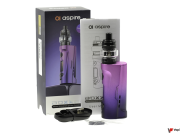Last Thursday, the U.S. Food and Drug Administration (FDA) announced that it would ban most e-liquid flavours with the exception of tobacco, mint and menthol at most traditional retail outlets such as convenience stores. Other fruity- or dessert-flavored varieties will only be sold at age-restricted stores or through online merchants that use age-verification checks.
On the same day, in a press release on its website, the FDA together with the U.S. Centers for Disease Control and Prevention (CDC), released findings from the National Youth Tobacco Survey (NYTS) showing that more than 3.6 million middle and high school students were current (past 30 day) e-cigarette users in 2018, a dramatic increase of more than 1.5 million students since last year.
The results which were published in the Morbidity and Mortality Weekly Report, suggested that youth who use e-cigarettes, are also using them more often. “According to the findings, the number of U.S. high school students who reported being current e-cigarette users increased 78 percent between 2017 and 2018 to 3.05 million (or 20.8 percent). Numbers among middle school students rose 48 percent to 570,000 (or 4.9 percent).”
Canada refrains from implementing flavour bans
“Canada has established a strong regulatory framework for vaping products, with a focus on preventing uptake by youth and non-smokers,” said Maddison, adding, “In addition to enforcing regulations that prohibit the sale of vaping products to people under age 18 the Government of Canada will soon be introducing a new public education campaign to increase awareness about the harms and risks associated with vaping product use among youth aged 13 to 18.”
“The campaign will also equip parents and other trusted adults with tools and resources to support conversations and discussions about the health risks of vaping products for this age group.”
Flavour bans could be detrimental to smoking cessation in adults
Another spokesperson for Health Canada Maryse Durette rightly pointed out that restrictions on flavours could be detrimental to smoking cessation in adults. “Flavours help make vaping liquids palatable to adult smokers seeking a less harmful alternative to tobacco,” Durette said. “Therefore, the use of flavours in vaping liquids is not prohibited under the TVPA [Tobacco and Vaping Products Act].”
“Health Canada has a rigorous compliance and enforcement program in place to monitor vaping manufacturers’, importers’ and sellers’ compliance,” she added.
Read Further: CBC













